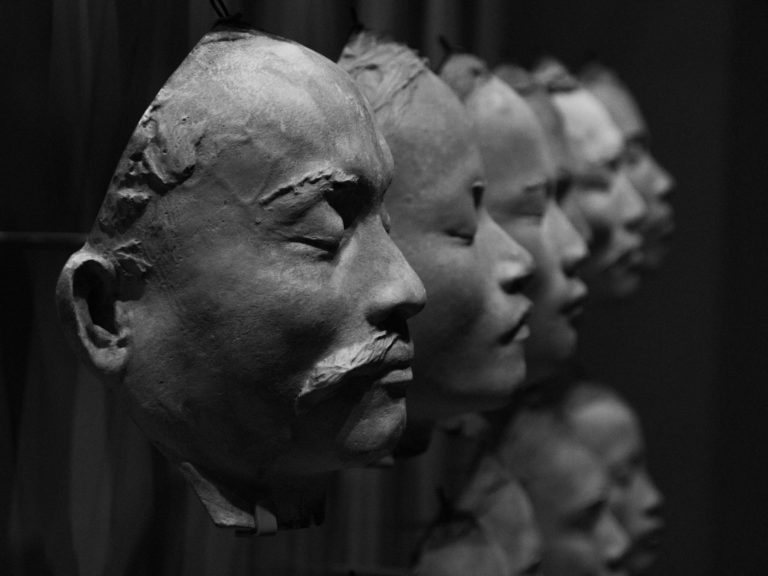Pedestals Don’t Excuse Backwards Politics
“So much of the content there was really quite racist.”
These are the words my companion for the evening, who does not work in the arts industry, simply proclaimed to me after attending a performance of Broadway’s current production of The King and I at the Vivian Beaumont Theater. I breathed a sigh of relief. Perhaps I was not alone in having serious reservations about The King and I. It is, after all, a staple of lyric theatre.
Back in music school, we studied Richard Rodgers’ scores together with the icons of musical stagecraft: from Monteverdi and Verdi to Benjamin Britten and Stephen Sondheim. As we continued into our professional lives, many of us carried — and continue to carry — these works in our heads. They are guiding lights as we compose our own works for the theater; all together, they form an anthology of memorized reference. In short, we have Richard Rodgers firmly on a pedestal.
I’ve seen many productions of The King and I. I’ve seen the current Broadway production five times. And though I’ve always struggled with the message of the work, it speaks volumes that it took an emperor’s-new-clothes moment to convince me that I am not alone in finding profound ethical flaws in a work of art that is almost universally adored by my colleagues.
Pedestals exist for a reason. The King and I’s score is a brilliant presentation of tuneful melodic invention. Though the themes are overemphasized through one reprise too many, they are as clear and identifiable as it gets. When composing my first opera, I would often go back to The King and I, as well as Allegro and Carousel, for guidance on how to solve issues of theatrical exposition, just as I would refer to Puccini’s impeccable dramatic timing when I wanted an example of how to measure theatrical pacing, or how I would turn to Verdi’s late scores to be impressed with how to end a scene memorably. Even before all this, when I was a little boy training my ears, it was “Bali Ha’i” from South Pacific that taught me how to identify musical intervals like octaves and sixths.
Like many composers, I owe Richard Rodgers a lot. Pedestals do exist for a reason. But pedestals don’t excuse politics that can be said to be backwards, even by the measure of their own times.
In The King and I, the inaccurate portrayal of the historic King Mongkut as a childlike tyrant and the infantilization of the entire Siamese population of the court speaks volumes. Theatrical adaptations do not need to be historically accurate. But, we should take note of the message they send.
There is a moment right before the final scene of the show where the British schoolteacher Anna Leonowens tells her very young son, Louis, that she wishes he had gotten to know the King better:
“You could have been great friends. In some ways he was just as young as you.”
In his article on contemporary Thai censorship of The King and I, Ian Buruma notes that the real King Mongkut “was not a strutting Oriental sex symbol, but a scholarly old gentleman with an excellent command of Latin and several European languages.” Young Louis had better brush up on his Latin!
Rodgers’ musical environment is also peppered with standard exoticisms. Open fifths and pentatonic inflections aim to define a “far-Eastern” sonic place, but it is Trude Rittmann’s ballet score for “The Small House of Uncle Thomas” that takes the prize for a broad rhythmic caricature of Siamese dance.
Also problematic is what the musical says about women and their role in the world. One of the most quoted songs in the show, “Something Wonderful,” is also one of the most celebrated numbers in all lyric theater. At its core is this message:
The thoughtless things he’ll do will hurt and worry you,
Then all at once he’ll do something wonderful.He has a thousand dreams that won’t come true
You know that he believes in them and that’s enough for you
You’ll always go along, defend him when he’s wrong,
And tell him, when he’s strong, he is wonderful.
This is a song that lacks a moral compass. If your man is wrong, defend him. He will make mistake after mistake; you must always support him. And on the off-chance that he does something right, remind him of how wonderful he is.
“Something Wonderful” is sung by the King’s primary wife, Lady Thiang, as she urges Anna to go stand by the King. When Anna asks why Thiang won’t go to her own husband, Thiang says:
“I am not scientific. He is great man. But he need special help. He need you…”
The message: Siamese women know their place. This brings to mind a passage earlier in the show where Anna lectures the king’s wives on equality for women — as though British women in the mid-19th century enjoyed these rights back home.
I often wondered how Puccini managed to conjure up a more layered and accurate Eastern atmosphere decades earlier when he was working on Turandot in the 1920s. Many of my questions were answered on a visit to Puccini’s home, now a museum, the Villa Puccini in Torre del Lago. There, I saw the phonograph that Thomas Edison gifted to Puccini, and I explored the wide variety of Chinese folk music records that the composer had ordered, as well as the music boxes brought to him from China. The main revelation was the little music box that played the traditional tune Mò Li Hūa (茉莉花), which Puccini transformed into Princess Turandot’s theme.
The difference between Puccini’s painstaking rendition in 1921 and Rodgers’ broad ethnomusicological brushstroke of 1951 is one of research and attention. This is not a value judgment on the merits of the two scores. Both are stunning. Like historical accuracy, musical authenticity in a work of lyric theatre is not essential. But as musical composers, we must be aware of the message we send in the ways we paint cultural environments.
The King and I tells an important story: of the meeting of cultures and the succession of kings; of generational change and colonial intrusion. And it does all this with a remarkable seriousness of purpose, and a score that shimmers in its best moments with some of the finest stretches ever seen on the lyric stage. It is a fine work of art, but the pedestals upon which we place our most cherished scores should not prevent us from seeing these works for what they are — wrinkles, flaws, and all. We need not be so precious as to worship a work of art blindly or treat it as sacred. We should ask questions about the political and ethical messages they send.
Back in the early 20th century, Thomas Edison, at the height of his powers as an inventor, wrote a letter to Puccini in which he said:
“Men die and governments change but the songs of La Boheme will live forever.”
As creators, we understand that our daily struggles and triumphs will pass, but we work diligently in the hopes that what we create will last. There is a pantheon of musical works of theatre ranging from La Boheme and Turandot to Aïda, South Pacific, The Death of Klinghoffer, West Side Story, Billy Budd, and The King and I that have stood the test of time. It is just as pressing to ask our difficult ethical, social, and political questions here as it is in the ephemera of daily op-ed pieces and newsroom first-drafts of history.

